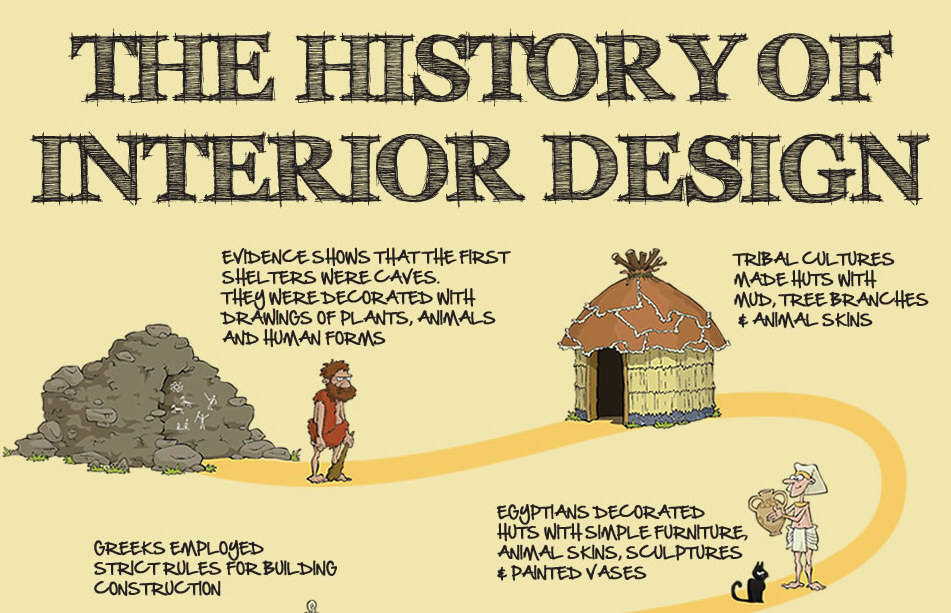Table Of Content

"Art Deco is a pastiche of different styles united by a desire to be modern," says Dr. Anna Ruth Gatlin, assistant professor of interior design at Auburn University. "There was an exuberance of having fought this great war and being done with war forever. The future was bright. People didn't want to look to the past; they wanted to look forward in all aspects of their lives." With World War I and the 1918 flu pandemic over, a sense of optimism and burst of economic prosperity fueled a desire for glamour and luxury in American homes. Art Deco, a look that featured bold silhouettes, rich colors, geometric patterns, luxurious fabrics, and mirrored and metallic finishes, was the age's reigning look. In addition to the above, World Design Day also celebrates the designers' profession and encourages them to continue developing their skills and contributions to society. The day also provides an opportunity to appreciate and stimulate the creativity of designers, both amateur and professional.
The term “graphic design” appears for the first time – 1922
The DHR should be maintained for every lot or batch of a given medical device. And with the computer era in full swing, entire rooms were dedicated to the home office with built-in desks and bookshelves. Bulky entertainment centers were also popular to house big screen TVs, massive stereo system and audio equipment. Homes designed during the ’70s also embraced a more Bohemian and organic aesthetic.
A glimpse into the digital era
His disciplined style and workmanship were particularly favored by businesswomen and the wives of senior executives. Using vinyl and metallic fabrics and putting emphasis on wit, imagination, and independence, she brought an unprecedented spirit of irreverence to New York in the 1970s. In the United States, the general trend in fashion was towards simplification and longer skirts, although many women reacted negatively to the midi-length, which they felt to be aging. Jeans profited most from becoming an accepted part of the American fashion scene in the 1970s, their newfound respectability deriving from their inclusion in collections under the heading of sportswear. The new stars of American ready-to-wear adapted the best of what they learned from Europe to the massive American clothing industry. Calvin Klein and Ralph Lauren rose from anonymity more or less simultaneously to tackle the question of designing clothes for the men and women of a new world.
Manuscript design in antiquity and the Middle Ages
You can also easily make “snapshots” of your DHF and save all records at a given point in time to a Document Collection. Subsequently, you can export and share your DHF with relevant external agencies.
Better Homes and Gardens has covered interior design since the dawn of the Jazz Age. Take a decade-by-decade look back at the furniture, colors, and styles that filled our homes over the past century. Bigger was better in the eighties, and many of the hairstyles from that decade help articulate that point—remember the big curly ringlets and crunchy waterfall bangs? The eighties also opened the door for more daring styles, like Bowie-inspired femme mullets and vibrant hues. Perms were a favorite styling choice for many American women in the 1980s and celebrities often wore dramatic, sculptural hairstyles. Of the many styles that came out of the eighties, one with continued staying power is the power ponytail.
This news website has many unnecessary advertisements and is so cluttered that I couldn’t see the main content. The two toolbars placed one below the other go against the principles of usability. There is neither an identifiable call to action button nor any hierarchy or categorization. Instead of placing the sub-sections randomly, there should be a few drop-down menus so the user has an interaction he desires. Let’s say I am a morning person (not that I am) and like to get things done early in the morning before my day starts. They were made out of one piece of leather that were sewn together with thin pieces of leather.
World Design Day 2024: Date, Significance, History & Activities To Celebrate
Let’s look at the ways that the tools of graphic design transformed over the 2010s. At present, the design thinking movement is rapidly gaining ground—with pioneers like IDEO and the d.school paving out a path for others to follow. Other prestigious universities, business schools and forward-thinking companies have adopted the design thinking methodology to varying degrees, and have sometimes even re-interpreted it to suit their specific context or brand values. David Kelley founded the Hasso Plattner Institute of Design at Stanford—commonly known as the d.school. IDEO have developed their own design thinking terminology, steps and toolkits. This picture was taken at one of their Make-a-thons—two fun, intense days where groups of people craft, hack and build human-centered design solutions to real-world problems.

Personal account
European design was usually very structured and theoretical, so American designers turned it more pragmatic, intuitive, and experimental. Paul Rand, Alvin Lustig, Bradbury Thompson, and Saul Bass are some of the names that mold those influences to produce their own style. De Stijl is characterized by using abstract geometry to find universal laws of balance and harmony in art.Mondrian’s paintings, influenced by Schoenmakers’ vertical lines and colors, became the representation of De Stijl’s philosophy. The next grand break, the Linotype machine, was invented in 1886 by Mergenthaler, and would also contribute significantly to alter design history. Historians believe that writing was born out of the necessity of keeping a record. To effectively store food, the first writers started to identify the content of pots and sacks.The earliest written records are Sumerian, carved in tablets of clay with a wood sharpened graver.
After 30 years of conservative clothing styles, the '60s saw a kind of throwback to the 1920s with women once again adopting a childlike look with bobbed haircuts and progressively less modest clothing. At the start of the decade, skirts were knee-length but steadily became shorter and shorter until the mini-skirt emerged in 1965. By the end of the decade they had shot well above the stocking top, making the transition to tights inevitable. By the end of the decade mass-manufactured, off-the-peg clothing had become much more popular than in the past, granting the general public unprecedented access to fashionable styles. It was in a series of collections named 'Jolie Madame' that he experienced his greatest success, from 1952 onwards. His sophisticated clientele was equally at home with luxurious elegance, simple tailoring, and a more natural look.
Jesús López rebrands a boutique Mexican hotel to reflect its local history and landscape - It's Nice That
Jesús López rebrands a boutique Mexican hotel to reflect its local history and landscape.
Posted: Mon, 22 Apr 2024 09:31:30 GMT [source]
As a contrast to the decade’s grunge, metal and rap music, sweet and sentimental Grandma-like decor was found in the home with frilly fabrics, embroidery and silk plants. The Ranch house, which was originally conceived by California architect Cliff May in the early 1930s, was becoming a popular architectural style in suburbs during the post-war boom, according to Wilson. These homes were characterized by their open-concept living spaces with big windows and sliding glass doors that opened up to the backyard. The stock market crash of 1929 led people to live with more practicality and simplicity in the ’30s, compared to the glamorous ’20s.

Vases with silk, plastic, or dried plants replaced houseplants, still considered a dated relic of the Carter era. Ralph Lauren Home debuted in 1983, and blue and white palettes showed up in striped curtains, wallpaper, and upholstery in rooms with traditional furniture. Monograms on pillows and chinoiserie lamps completed a look that took its inspiration from old money. Country style, another microtrend, featured oak furniture, glazed tile, canisters embellished with country ducks, and rooms swathed in light blue and, yes, mauve.
Flat shoes, no make-up, reserve, modesty, and secrecy were the hallmarks of this modern look. Eventually, it began to include details from the fashions of the past, as Europe's ancient sites were revisited by these anarchists of fashion, whose influence on the shape of clothes, at the end of the 20th-century, became legendary. After the war, the American look (which consisted of broad shoulders, floral ties, straight-legged pants, and shirts with long pointed collars, often worn hanging out rather than tucked in) became very popular among men in Europe. Certain London manufacturers ushered in a revival of Edwardian elegance in men's fashion, adopting a tight-fitting retro style that was intended to appeal to traditionalists. This look, originally aimed at the respectable young man about town, was translated into popular fashion as the Teddy boy style. The Italian look, popularized by Caraceni, Brioni, and Cifonelli, was taken up by an entire generation of elegant young lovers, on both sides of the Atlantic.
By the 2010s, America had climbed out of the Great Recession and into a new decade. Technology had so thoroughly pervaded our lives that you could get furniture equipped with USB ports. Smart tech began to automate homes, making it possible to turn on lights, adjust the thermostat, and open the blinds through an app. Stencils, sponge-painting, and faux finishes made interior walls look like leather, stucco, marble, ancient frescoes—anything but drywall.
A radical change from the norm for women’s haircuts, the bob took a firm hold in the 1920s, and its popularity extended into the next decade. The style could be elevated with the use of hair accessories, and in Depression-era America, women appreciated the ease of the finger wave—a style women could do at home without the expense of a stylist or the need for an iron. These face-framing styles were able to reflect both the prosperity of the 20s and the scarcity of the 30s, all in one signature look. Flying in the face of continuity, support and logic, and erudite sociological predictions, fashion in the 1950s, far from being revolutionary and progressive, used more from the previous decade. A whole society which, in the 1920s and 1930s, had greatly believed in progress, was now much more circumspect.
The day was established in order to raise awareness about the value of design and to promote good design as a way to improve the quality of life. Taking the soft curls of the 1940s in a slightly more dramatic direction, signature styles in the 1950s include the velvet curl, often recognized by the sweeping curl over one eye—a classic look in old Hollywood—and a deep center part. The 50s also introduced big bouffant styles, achieved by backcombing hair to add extreme volume, usually at the top and back of the head. These styles could be worn in an updo—think French twist or chignon—or down, often being paired with soft curls beneath the bouffant. The multiplicity of trends that bloomed during the 80s were curtailed by the economic recession that set in at the beginning of the 1990s, largely destroying the optimistic mood that is so advantageous to the fashion industry.
Keeping ahead of its competitors, Apple released the iPad in 2010—yet another screen designers had to take into account with responsive web design. And with everything else in this decade going digital, it was only a matter of time before books succumbed to the thrall of the Information Age. Paving the way for multimedia graphic design, MTV was initially only available in parts of New Jersey, before becoming a cultural sensation in North America, Europe and Asia.
No comments:
Post a Comment